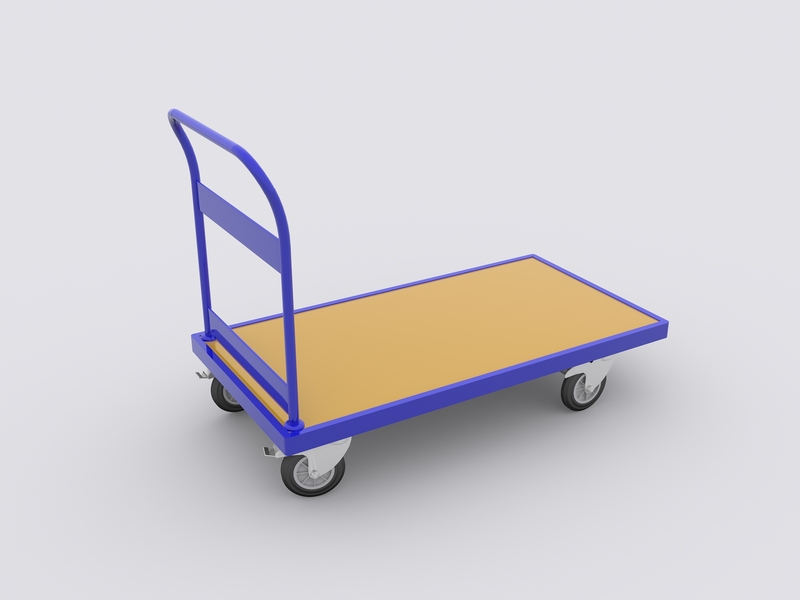A Room-by-Room Approach to Packing for Your Next Move
Packing for a move can often feel like an overwhelming task. Whether you're relocating across the street or to an entirely new city, tackling your entire home at once can quickly become chaotic. That's why a room-by-room packing strategy is one of the most effective ways to organize your move, reduce stress, and ensure nothing important is left behind. In this comprehensive guide, we'll delve into plenty of practical tips, moving hacks, and essential checklists to help you manage each space in your home efficiently and confidently.
Why Choose a Room-by-Room Packing Method?
The room-by-room packing for your next move method breaks a massive job into manageable segments, allowing you to focus your energy and resources where they're needed most. This structured approach makes it easier to:
- Stay organized: By finishing one room at a time, you can neatly categorize boxes and prevent household items from getting mixed up.
- Streamline unpacking: When you arrive at your new home, boxes labeled by room make unpacking much faster and less stressful.
- Minimize loss and damage: A methodical packing process decreases the likelihood of misplacing items or causing accidental breakage.
- Delegate easily: Packing tasks can be assigned to family members or a moving crew more simply, since everyone knows exactly which area to focus on.

Getting Started: General Packing Preparation
Before diving into each individual room, take these essential pre-packing steps:
- Create a packing timeline: Assign specific days to each room, allowing flexibility for larger or cluttered spaces.
- Gather supplies: Stock up on quality moving boxes, packing paper, bubble wrap, markers, packing tape, labels, and specialty containers for fragile items.
- Declutter before you pack: Walk through each room with donation or discard boxes in hand. The less you move, the easier the process.
- Take photographs (optional): Photograph electronics setup, organized drawers, or decor arrangements for easy reassembly after the move.
Pro Tip: Reserve a "moving essentials" box for daily necessities (think toilet paper, paper towels, medications, and chargers) that travels with you, not the movers.
Room-by-Room Packing Guide
Now it's time to break down the home into functional spaces, addressing packing room by room. For each area, we'll provide tailored advice and checklists to help you work efficiently and thoughtfully.
1. Kitchen: The Heart of Your Home
Packing the kitchen is often the most complex due to its combination of fragile, sharp, and perishable items. Here's how to handle it:
- Start early: Begin packing dishes and cookware you don't use daily at least a week in advance.
- Use lots of padding for breakables: Wrap glassware, plates, and ceramic pieces individually in packing paper or bubble wrap. Nest items with extra cushioning.
- Bundle utensils: Group spatulas, ladles, and cutlery in sets. Consider wrapping knives separately and labeling them for safety.
- Sort food items: Toss expired or almost-empty items. Donate non-perishables you won't need, and use up what you can before moving day.
- Take care with appliances: Disassemble blenders, remove batteries from gadgets, and pack each appliance in its original box if possible.
- Label EVERYTHING: Be descriptive on your boxes, distinguishing "dishes," "pots," or "pantry" for easy organization.
Don't forget to defrost your refrigerator 24-48 hours before moving and clean it thoroughly!
2. Living Room and Family Room
When packing your main living areas, you need to pay special attention to electronics and sentimental items. Follow these steps:
- Wrap electronics securely: Use blankets or bubble wrap to pad TVs, computers, and stereo components. Take photographs of cord arrangements before dismantling for easy reassembly.
- Box up books and media: Pack books flat to avoid damaged spines, and use smaller boxes--they can get heavy quickly!
- Decor and artwork: Wrap framed pictures individually with paper and place them vertically in specialty picture boxes.
- Disassemble furniture: Remove legs from tables, take apart shelves, and bag hardware separately (label clearly).
- Pack soft furnishings last: Cushions, rugs, and throws can act as extra padding for delicate items.
If you're hiring movers, check their liability coverage for high-value electronics and art pieces.
3. Bedrooms
The key to efficiently packing the bedroom is sorting through clothes and personal effects:
- Declutter clothing: Donate or sell unused clothing, shoes, and accessories well before moving.
- Use wardrobe boxes: These tall boxes allow you to move hanging clothes directly from closet to closet with minimal effort.
- Organize jewelry and valuables: Keep valuables with you in a personal bag, especially if they're irreplaceable or expensive.
- Label bedding and linens: Pack one set of bedding for each family member in an "open first" essentials box for a comfortable first night.
- Disassemble bed frames: Place screws and bolts in a clearly labeled bag taped to the bed's headboard or inside a designated box.
Vacuum-seal out-of-season clothes to save space in your boxes!
4. Bathrooms
Bathrooms might be small, but they contain a surprising number of loose, leaky, or fragile objects:
- Sort and toss expired products: Avoid bringing half-empty bottles and old medicines to your new home.
- Pack toiletries upright: Use zip-lock bags for soaps, lotions, and liquids to prevent spills within boxes.
- Separate daily essentials: Pack a "last out, first in" bag with toothpaste, brushes, towels, and soap for each person.
- Wrap breakables: Secure glass perfume bottles or mirrors in bubble wrap.
- Keep cleaning supplies isolated: Some movers won't transport chemicals--move them yourself or dispose of them according to local regulations.
5. Home Office
Packing the home office requires some additional caution due to sensitive documents and electronics:
- Backup digital files: Use a cloud service or hard drive for essential files in case of hardware mishaps.
- Secure paperwork: Place important documents in a labeled accordion folder or locked box you personally transport.
- Disassemble office furniture: Remove wheels and handles; tape them inside drawers or the box with other parts.
- Label electronics cables: Use color-coded labels or masking tape to identify power cords and connections for monitors, printers, etc.
- Sort supplies: Donate old notebooks, pens, and unused office extras to lighten your boxes.
6. Garage, Shed & Storage Areas
Many people forget just how much accumulates in these spaces over time. Smart packing for garages and storage includes:
- Downsize tools and outdoor equipment: Sell or donate duplicates or outdated gear.
- Bundle loose items: Use sturdy boxes or totes for hardware, gardening supplies, and auto fluids. Secure long-handled tools with zip ties.
- Drain gas or oil from machinery: Mowers, trimmers, and other gasoline-powered tools should be emptied before transit.
- Dispose of hazardous materials: Paint, chemicals, and propane tanks cannot be moved by most professional movers.
- Clearly label all boxes: "Garage--Hand Tools," "Garage--Camping Gear," etc., for easy unloading at your new place.
7. Attic, Basement & Utility Spaces
Don't forget to include the attic, basement, or utility rooms in your comprehensive room-by-room moving checklist:
- Sort items early: These spaces are notorious for forgotten boxes and holiday decorations.
- Separate seasonal items: Label bins for "Holiday Decor," "Winter Gear," etc., for organized unpacking.
- Check for pests or damage: Plan to clean or treat items before packing if needed.
- Use plastic bins for long-term storage: Cardboard boxes can attract moisture and pests--especially in basements and attics.
Tips for Optimizing Your Room-by-Room Packing Plan
As you employ a room by room packing strategy, keep these additional ideas in mind for a smart, stress-free move:
- Color-code boxes by room: Use colored tape or markers--blue for the kitchen, yellow for bedrooms--and stick corresponding stickers on each door at your new home.
- Keep an inventory list: Number each box and jot down its content and destination room. This is helpful if boxes go missing or you need to find something in a hurry.
- Don't overload boxes: Heavier items should go in smaller boxes for easier lifting. Lighter, bulky items can fill larger boxes.
- Pack similar items together: Don't mix rooms unless necessary. For instance, avoid tossing bedroom items into living room boxes, which can confuse unpacking.
- Use suitcase space wisely: Fill suitcases, duffels, and laundry baskets with clothes, towels, or even books for easy rolling and less wasted space.
Labeling and Prioritizing: Don't Skip This Step!
A consistent labeling system is the linchpin of every efficient room-by-room moving plan. Take time to:
- Number every box
- List its primary contents
- Write destination room clearly: "Kitchen--Pots & Pans," "Bedroom 2--Winter Clothes," etc.
- Mark 'fragile' items boldly
- Indicate priority unpacking: For urgently needed boxes, add a "OPEN FIRST" label
By following a clear system, your movers--and your future self--will thank you on move-in day.
Common Mistakes to Avoid When Packing for Your Move
Even the most organized packers fall into some traps. Here are mistakes to sidestep during your packing room by room for moving process:
- Leaving packing until the last minute: Start early to avoid rushed and careless packing.
- Overloading boxes: Heavier boxes are harder to lift and may break easily.
- Mixing fragile with heavy items: Always use plenty of cushioning material and pack fragile items by themselves.
- Failing to label: A missing label can mean days digging through boxes once you arrive.
- Forgetting to measure furniture: Make sure large furniture fits through new doorways before moving day.
- Neglecting utility and change-of-address tasks: Schedule shut-off and reactivation dates well in advance.

Final Room Check: Before You Close the Door Behind You
With every room carefully packed, walk through your old home with your list in hand. Open all cabinets, closets, and drawers one last time. Check attics, crawl spaces, and outdoor sheds. Your room-by-room approach greatly reduces the odds of leaving anything behind, ensures your precious belongings remain safe, and helps your transition go as smoothly as possible.
Conclusion: The Power of a Room-By-Room Packing Plan
Adopting a room-by-room method of packing for moving isn't just about organization--it's about peace of mind. By dividing your move into clear steps tailored to each space in your home, you're more likely to keep your belongings safe, your stress levels low, and your unpacking process quick and enjoyable. Remember, the best moves aren't defined by how many boxes you fill, but by how intelligently and systematically you fill them. So, the next time you relocate, trust in a room-by-room approach to packing--it makes all the difference between chaos and calm for your next adventure!
Need more moving advice? Be sure to check out our related articles on moving checklists, decluttering tips, and best practices for unloading after you arrive!



